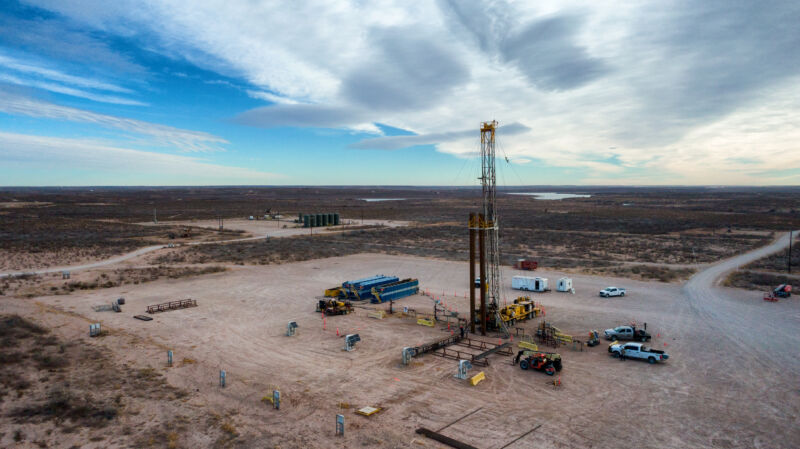French drillers may have stumbled upon a mammoth hydrogen deposit

Enlarge / The equipment needed for drilling a borehole of this type. (credit: Joey Ingelhart)
On the outskirts of the small town of Folschviller in eastern France stand three nondescript sheds. One of these temporary structures has recently become a hive of activity due to a continuous stream of visitors, including scientists, journalists, and the public.
The shed sits above a borehole first drilled in 2006 and houses a gas measurement system called SysMoG, which was originally developed to determine the underground methane concentration. While the device did detect almost pure methane (99 percent) at a depth of 650 meters, probing further down, the borehole resulted in an unexpected and surprising discovery: hydrogen in high concentration. At 1,100 meters, the concentration of dissolved hydrogen is 14 percent. At 3,000 meters, the estimated concentration could be as high as 90 percent," Jacques Pironon, director of research at GeoRessources lab at the Universite de Lorraine, said.
Based on the estimates of methane resources and the concentration of hydrogen detected so far, scientists have conjectured that the Lorraine region in eastern France, of which Folschviller is a part, could contain 46 million tons of white-or naturally produced-hydrogen. That would make it one of the world's largest known hydrogen deposits.